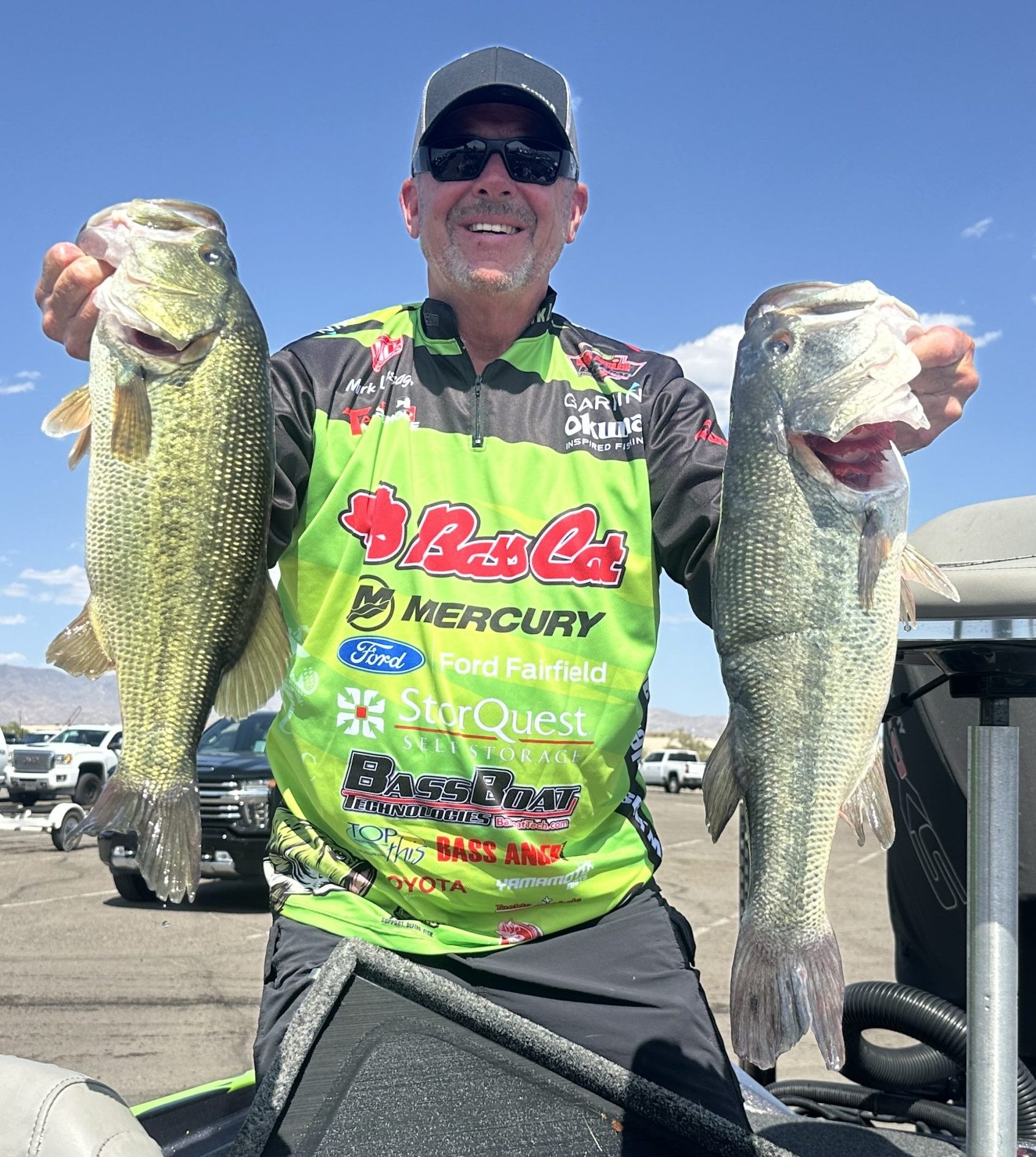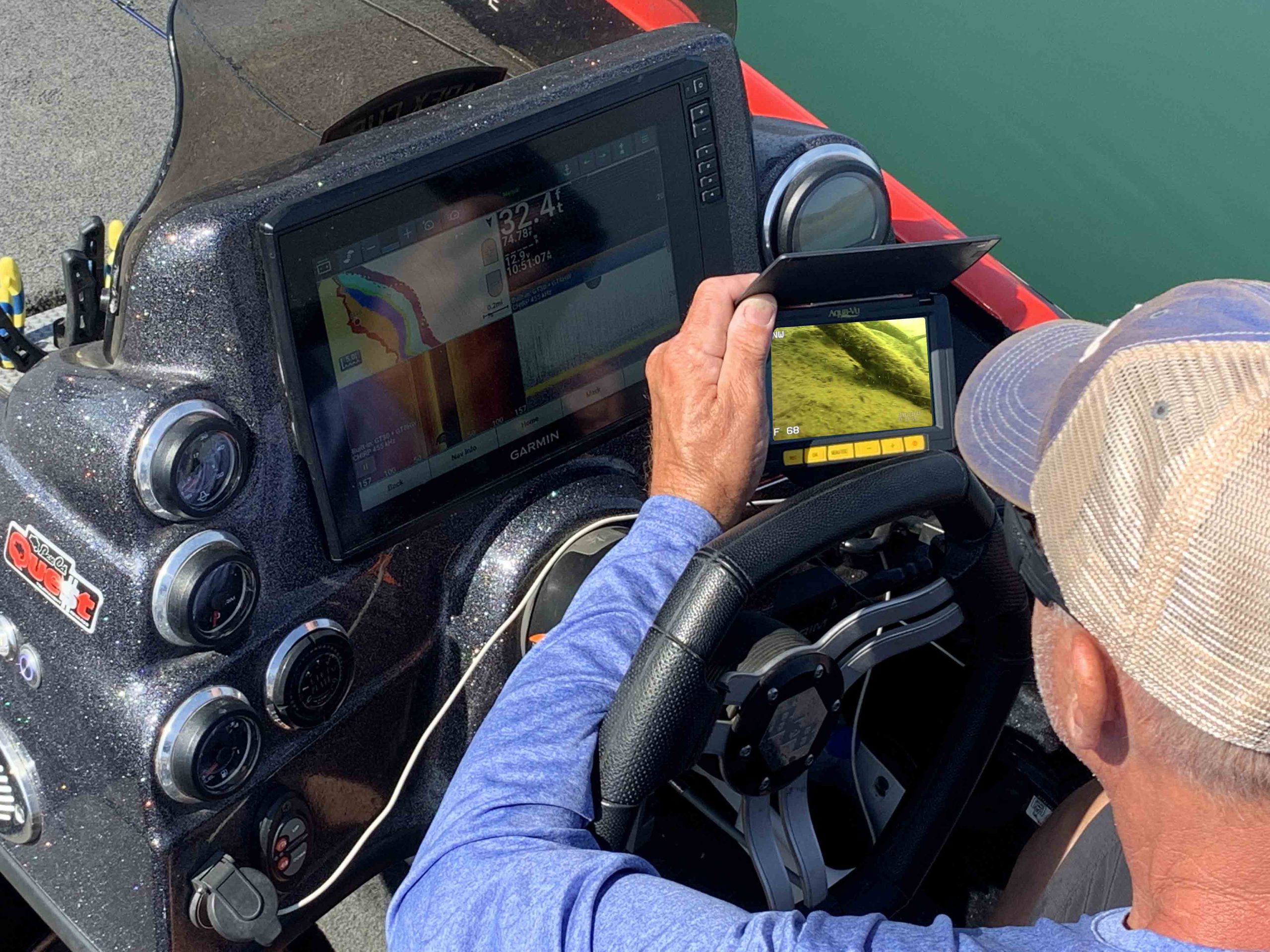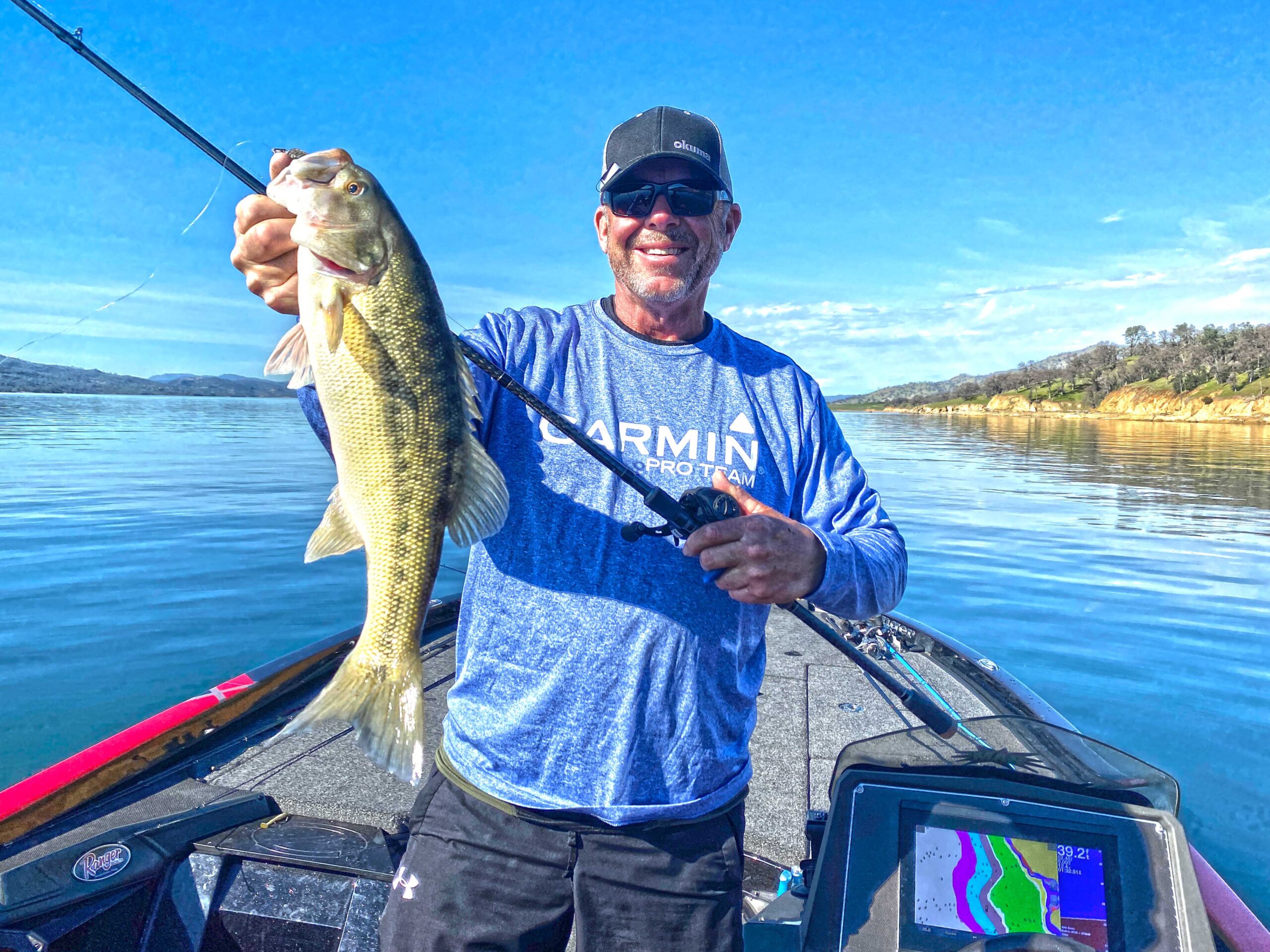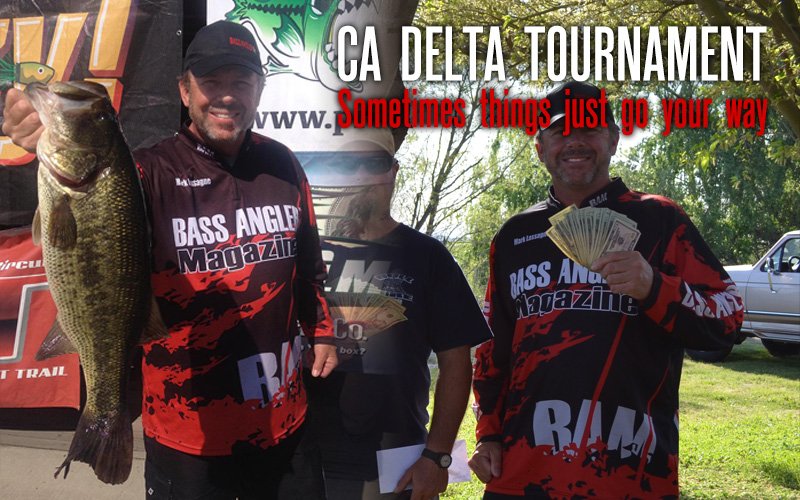Garmin revolutionized the sonar industry with LiveScope technology and its unprecedented live views of fish swimming and attacking a lure in real time. Pairing LiveScope with a quality sonar like ClearVü, SideVü, or traditional 2D broadband will give you a good idea of cover and bottom composition, and whether fish are nearby.
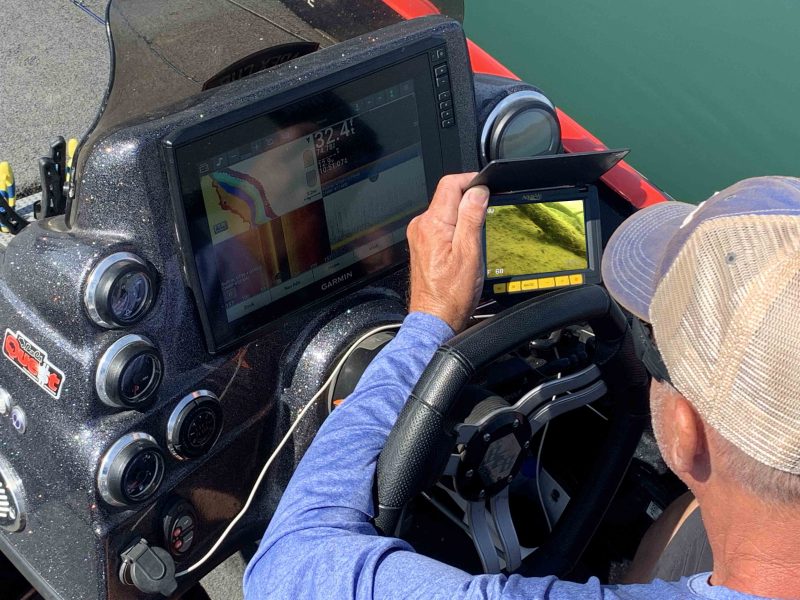
Looking below the surface will give you clues not easily found by any other method.
Bass Angler Magazine Images and story by Mark Lassagne
Other vital additions to my toolbox are my Aqua-Vu underwater cameras. I have a Micro Revolution Pro (with built-in recording feature), and an HD7i with a turntable and AV Connect Recorder. I use the small Micro Pro for quick and easy viewing or as a compact travel option when I’m fishing in a boat other than my own. The Micro series is a great option for kayaking and smaller watercraft. The HD7i is bigger so it takes a little more effort to set up, but it has a better camera and it’s great for scouting and getting a clear look underwater. With the AV Connect I can link to my phone and record what I see, which I ultimately share with readers as a part of these articles.
I believe that with LiveScope and Aqua-VuI’m a more well-rounded angler, and with what I’ve learned I’m able to make better and more informed decisions. Personally, that equates to better tournament finishes and a paycheck more often.
ROCKY POINTS
If you’re like me, you may need to get hit in the head a few times before realizing you should get out of the way.
After looking over many videos I’ve noticed one reoccurring common denominator, and that is bass gravitate towards rocky cover and structure. Largemouth, smallmouth, and spotted bass all like to be near rocks. When I drop the camera down and see rocks, especially if it’s a point, I know there will be bass nearby. Honestly, I can’t recall a time when I’ve found rock on a point and bass weren’t present.
I can hear you thinking, why don’t you just fish rocky points? Simply put, just because bass are present doesn’t mean they’ll bite.

For example, the bite was very tough this past January on Lake Mohave. Mohave has extremely clear water and the visibility was up to 30 feet, revealing fish to be everywhere. The one thing I keyed on was shallow rock and rocky points. Making long casts with weightless baits to shallow water put me in the money at the finish. I could see bass in other places, but they wouldn’t bite unless rock was also a part of the equation.
SOMETIMES THEY DON’T
Perhaps the most frustrating thing about what my Aqua-Vu can reveal is a school of bass from which no fish will bite, with smallmouths being the worst offenders. Once I was fishing a highland reservoir and when I lowered the camera, though I could see literally hundreds of nice smallies, none would bite. I tossed everything I could think of, but they wouldn’t fire. Remember, just because they’re there doesn’t mean they’ll bite simply because you found them and presented a bait. However, it’s likely at some point they will eat, so make note of what you found and revisit the area at strategic times. You know the bass are there for a reason.
At the risk of oversimplifying things, my belief is that even when bass are in an active mode throughout a body of water, only a small percentage of available fish will actually bite.
THE REAL VIEW
 Using the Aqua-Vu gives me a good idea of what a bait might look like to a fish. Getting the right camera angle is tough but once you get the bait in front of the camera it’s an eye-opening experience.
Using the Aqua-Vu gives me a good idea of what a bait might look like to a fish. Getting the right camera angle is tough but once you get the bait in front of the camera it’s an eye-opening experience.
One day I found a sizeable school of about 20 spotted bass at Lake Shasta. I lowered the camera, and my partner fished a spoon right though the school while I watched on the Aqua-Vu. I could see the jigging spoon and to me it didn’t look like any kind of baitfish or anything a fish would bite. But … as I was thinking that a bass moved in and ate it. The spoon went up and down maybe two dozen times before the bite, and it was like a cat pouncing on a bird. The bass were in the back, watching and waiting before the attack.
Another observation is the dropshot (this one on camera). Even in semi-stained water you can plainly see the hook, and though not visible in the screen grab, I could see the line on the camera’s viewfinder at the time. The hook was a #6 dropshot and the line was 6-pound fluorocarbon, so if I could see it on camera, I’m sure the fish can see it in the water. While talking with another pro he swears using 4-pound line makes a big difference. In a tournament last year on a clear-water lake, he had a limit before his non-boater caught a fish. Once his non-boater switched to 4-pound line he started catching fish too, demonstrating there may be some truth in it.
These two variations may give us a clue that slow moving baits need to look more realistic whereas with faster moving baits it’s more about reaction and less about realism.
FINDING A PATTERN
I recall a time when using LiveScope I was able to see some fish in what looked to be brush piles, but after lowering the camera I could see they were quality bass in submerged laydowns. That day I went on to catch a good number of quality bass. Knowing what was there gave me the confidence to search out more laydowns and try different techniques until I figured out how to catch these bass.
Another time on the Sacramento River/California Delta I was heading down a riprap wall and catching plenty of bass, but they were small. Being curious I lowered the camera and could see small fish along the rock. But when the camera found the seam where the rock met sandy river bottom, I saw what appeared to be larger fish. Armed with this knowledge we went out deeper with Neko-rigged Senkos and that was it. Now instead of catching small 8-inch bass we were getting fish in the 2-pound class.
Time and time again I’ll drag the camera to see what I can find and often I’m surprised. I’ll go along for a while with nothing and then suddenly find bass near some rock, a tree, grass, or some other structure I didn’t know was there.
Stay tuned as I share what I’m learning throughout 2022. I also frequently share underwater Garmin/Aqua-Vu videos on my Facebook page at www.facebook.com/marklassagnefishing.
#garminpro #aquavu #bassanglermagazine
………………………………………………………………………………………………………………………………………
MLF Toyota series angler Mark Lassagne, from Dixon, California, served our great nation as a U.S. Marine. He is a successful tournament angler competing on the West Coast. In addition, Mark is the publisher of Bass Angler Magazine. A former B.A.S.S. Federation State Champion, he has qualified for the MLF Tackle Warehouse Tour, the Bassmaster Top-150s, Wild West Championship, West Coast Bass Classic, and MLF Championships. Though a major win has eluded him, Mark has cashed a check hundreds of times on nearly every lake across the West Coast.
